|
|
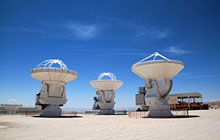
|
24 October 2013: The ALMA Early Science Cycle 2 Call for Proposals has been issued. The full Call and all the information and tools relevant for proposal preparation are available through the ALMA Science Portal. The proposal deadline is 5 December 2013 with the start of Cycle 2 observations expected in June 2014. Cycle 1 high priority projects that remain uncompleted ...
|
| Read more |
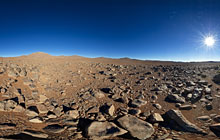
|
24 October 2013: Exoplanet research is one of the major science drivers for the future European Extremely Large Telescope (E-ELT). This community workshop will explore the science cases and the planned capabilities of the E-ELT in the field of exoplanet research. The aim is to provide a synthesis of the goals to be achieved by the E-ELT with its planned instrumentation in the ...
|
| Read more |
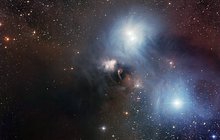
|
24 October 2013: Herbig Ae/Be (HAeBe) stars are a class of early-type pre-main sequence objects whose stellar mass corresponds to the transition regime between Solar-type stars and high-mass stars. They are generally bright at most wavelengths allowing a detailed view of their evolving environment and are pivotal objects for the formation of both stars and planets. The high-resolution observational and theoretical advances of ...
|
| Read more |
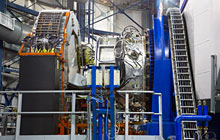
|
24 October 2013: After a very successful start of commissioning in November 2012, KMOS officially began scientific operations this month. KMOS is an integrated-field-unit (24 sub-fields), medium-resolution (R~3000–4000) spectrograph covering the 0.8–2.5 micron region of the spectrum. After X-Shooter, which started operations 4 years ago, KMOS is the second of the second-generation VLT instruments now in operation at the VLT. Next ...
|
| Read more |
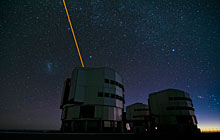
|
24 October 2013: ESO has recently expanded and improved the user experience in obtaining information about, and data from, Service and Visitor Mode runs on the Run Progress Pages. These pages, available via the User Portal link View your list of Observing Runs, now provide links for accessing all data from a run, data from one or more single OBs from ...
|
| Read more |
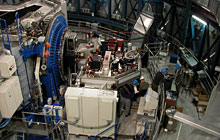
|
24 October 2013: The Science Archive Facility now provides access to reduced scientific data obtained with the UVES spectrograph mounted on the VLT. More than 75000 spectra of point-like sources obtained in "ECHELLE mode" from the beginning of 2000 until 2013 are now published. The data consist of extracted wavelength- and, whenever possible, flux-calibrated 1-dimensional spectra in tabular format following the ...
|
| Read more |
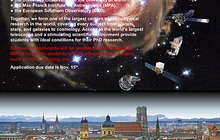
|
24 October 2013: If you wish to conduct a PhD in astronomy-astrophysics within one of the largest centres of astrophysical research in the world, which covers every subject from planets, stars, and galaxies to cosmology, you should seriously consider applying to the IMPRS studentship programme in Munich. The International Max-Planck Research School on Astrophysics is a joint graduate school of the Max-Planck ...
|
| Read more |

|
24 October 2013: The VIMOS Public Extragalactic Redshift Survey (VIPERS) is an ongoing Large Programme to map in detail the large-scale distribution of galaxies at 0.5<z<1.2. The project is focused on precisely measuring galaxy clustering and related cosmological quantities, while providing a detailed description of galaxy properties and evolutionary trends, when the Universe was about half its current age. The survey includes a ...
|
| Read more |
Upcoming ESO or ESO-Related Workshops
- ESO Workshop on Deconstructing Galaxies: Structure and Morphology in the Era of Large Surveys
Santiago, ESO Santiago, 18 - 22 November 2013
The study of the structure and morphology of galaxies is one of the major astronomical tools to address how galaxies form and evolve. There has been much recent progress in understanding the properties of different structural components in nearby and intermediate redshift (z ~ 1-2) galaxies. The strengths and limitations of the different techniques for obtaining structural measures of galaxies, particularly with regard to handling large surveys, will be highlighted. This conference will bring together over 100 observers and theorists, and it is intended to be highly participative, with substantial time devoted to discussions. More details can be found here.
- ALMA Community Days 2013: Preparing for Cycle 2
Auditorium and Council Room, ESO Garching, 19 - 20 November 2013
The aim of the 2013 ALMA Community Days is to optimally prepare the astronomical community for ALMA Cycle 2 proposal submission. Besides a series of technical and scientific presentations, there will also be practical hands-on tutorials for the ALMA proposal preparation software, and an introduction to (sub)mm-interferometry techniques for novices in the field.
- Workshop on 400 Years of Stellar Rotation
Natal, Brazil, 21 - 26 November 2013
In 1613 Galileo Galilei observed solar spots and interpreted their motion as due to solar rotation. After 400 years we are able to quantify in detail the behaviour of the rotation of the Sun in time, as well as the evolutionary behaviour of stellar rotation all across the HR Diagram. This meeting will consider all aspects of stellar and solar rotation and, in addition, present the state of the art of stellar rotation coming from the space missions CoRoT, Kepler and Spitzer. The workshop is co-sponsored by the European Southern Observatory and the International Institute of Physics of Natal and further details can be found here. The deadline for registration is 01 June 2013.
- 3D2014 - Gas and stars in galaxies: A multi-wavelength 3D perspective
Garching, 10 - 14 March 2014
This workshop aims to bring together the optical/near-infrared, millimetre and radio communities working on 3-dimensional extragalactic data, following on from the similarly themed 2008 workshop. Science topics are centered on both gas and stars in galaxies and examples include dynamics, AGN and supermassive black holes, high redshift galaxies and deep fields. Tools to visualise and analyse multi-wavelength data cubes will also be discussed. In association with the workshop, three parallel user workshops on reduction and analysis of 3D data from KMOS, MUSE and ALMA will be held. Further details can be found here. The abstract and registration deadline is 1 December 2013.
- Astrotomography II - Imaging at the Micro-arcsecond Scale
Santiago, ESO Santiago, 1 April 2014
This workshop, which should have taken place in December has been postponed until further notice. It will likely take place in April or May 2014. Date is not yet fixed.
Astrotomography is a generic term for indirect mapping techniques that can be applied to a huge variety of astrophysical systems, ranging from planets, through single stars and binaries to active galactic nuclei. Given the increase in scientific output of astrotomography, it is timely to review the methods, chart progress in the field and prepare the next generation of astronomers to use the tools. The workshop themes will cover computational methods, techniques and new developments, new instrument possibilities and applications. In addition to reviews and contributed talks, an additional day is planned with a hands-on training workshop. Further details are available by contacting the organisers at tomo2013@eso.org.
- The Formation and Growth of Galaxies in the Young Universe
Obergurgl, Austria, 26 - 30 April 2014
It is now about 4 years since the last galaxy evolution ski conference at the University of Innsbruck Obergurgl Center. Since then several major surveys have been completed by Hubble and Herschel, wide-field near-infrared imaging has been delivered by VISTA, SCUBA2 has commenced sub-mm surveys on the JCMT, near-infrared multi-object spectrographs have commenced operation on 8-m class telescopes, and the first results have emerged from ALMA and Planck. The aim of this meeting will be to review and discuss these observational advances, alongside progress in theory/simulation, with a dual focus on galaxy/black-hole evolution at z > 2 and reionization/first-galaxies at z > 6.
The meeting will consist of invited and contributed talks and there will space for posters. Each day will be split to allow ~4 hours for lunch/skiing/scientific discussion between 12pm and 4pm. More details
here.
|
|
|
|
|
|
|
|